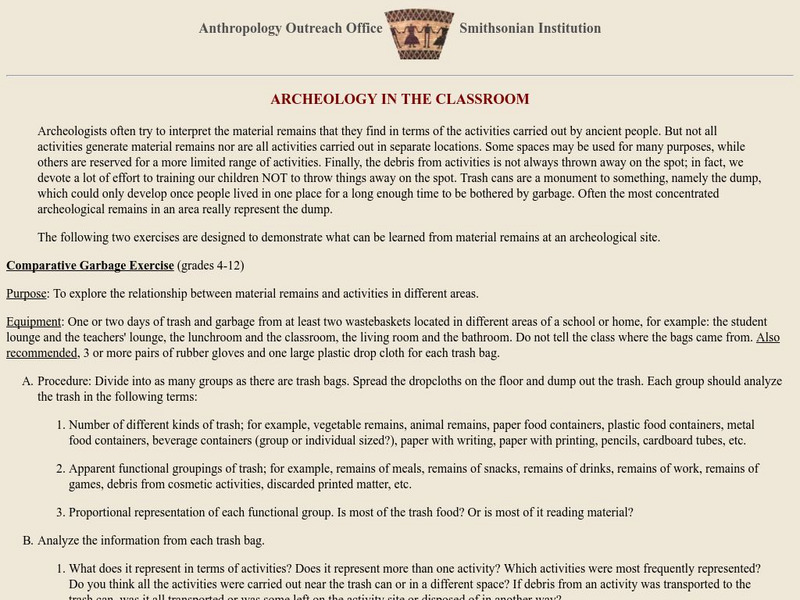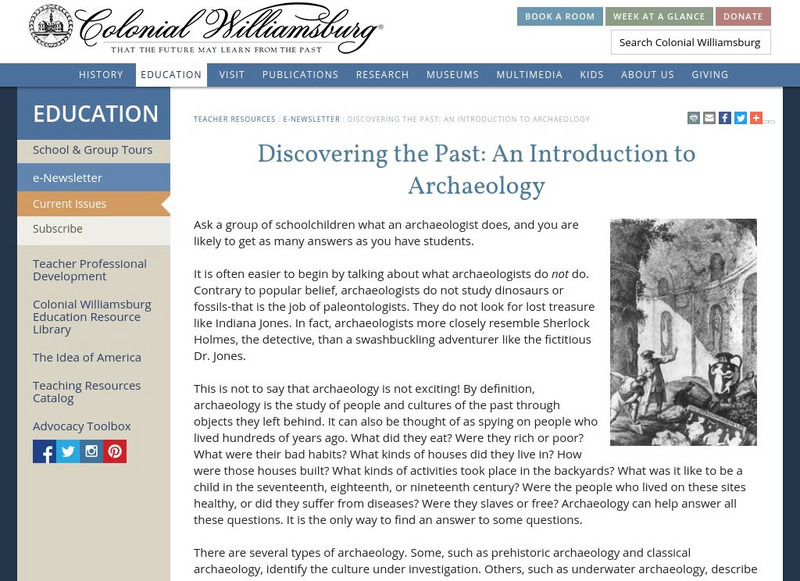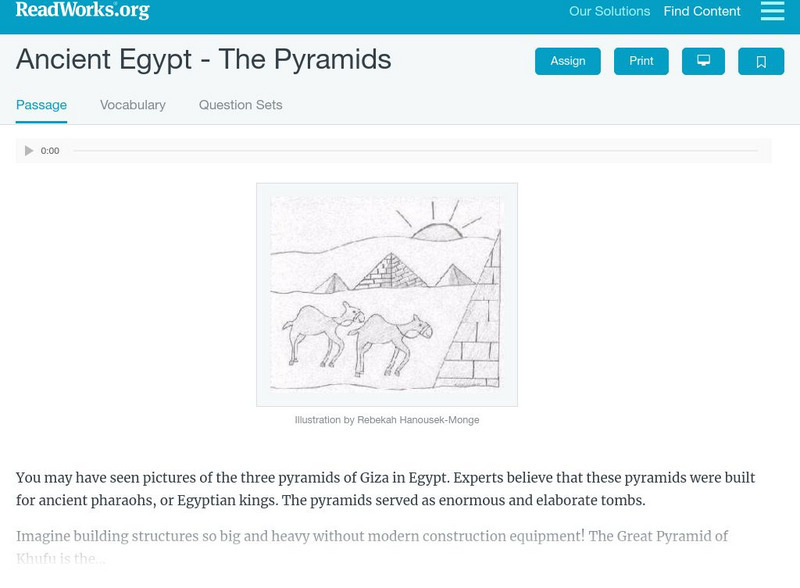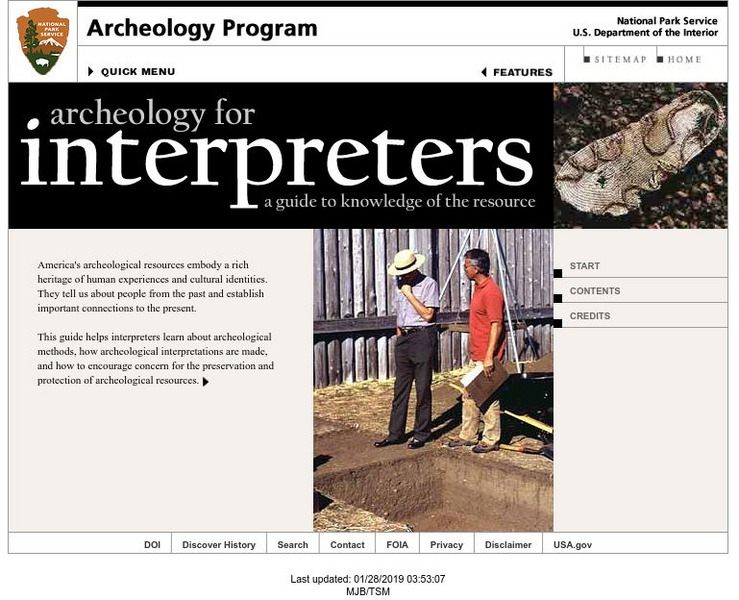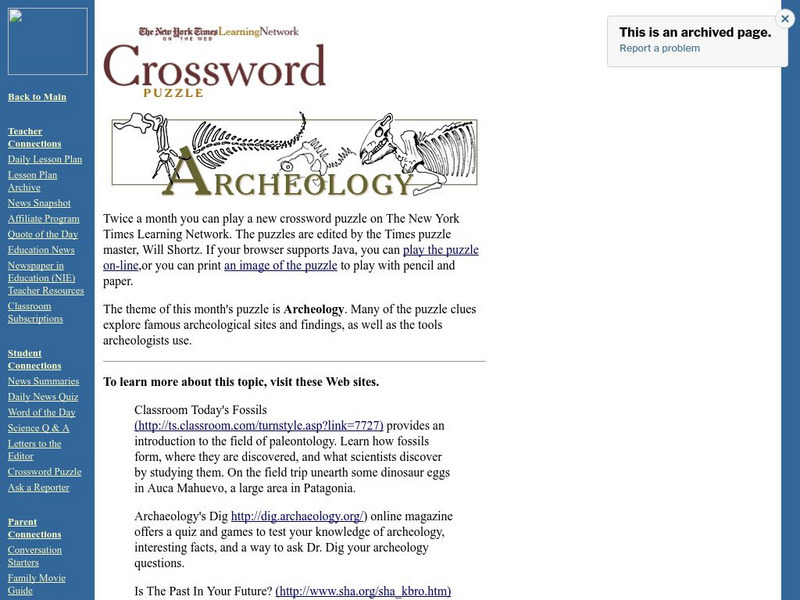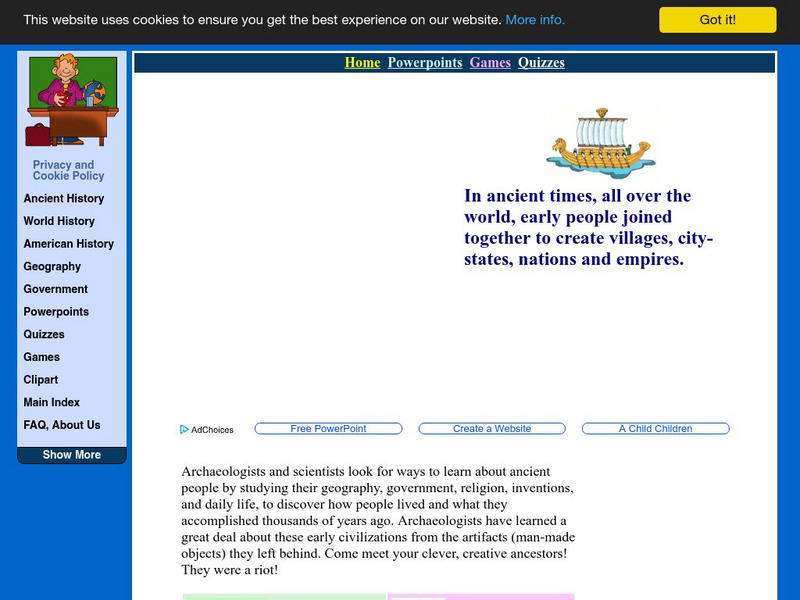Smithsonian Institution
National Museum of Natural History: Random Strategies in Archeology
Students participate in a three-part archeological interpretation activity. First, they learn the principles of archaeology and the importance of material culture, and then they question ideas and interpret artifact evidence. Finally,...
Smithsonian Institution
National Museum of Natural History: Archeology in the Classroom
Two different leveled lessons allow students to become archeologists as they interpret material remains left behind by ancient people.
Other
Environmental Science: Environmental Science Careers
Explore this list of close to fifty science careers with a connection and focus on environmental science. Also compare average salaries of each.
Colonial Williamsburg Foundation
Discovering the Past/ an Introduction to Archaeology
This is a good, solid, but concise introduction to what archaeology is, how a site is set up, what one uses artifacts for, and how to approach a site. It is written for the teacher's newsletter from Colonial Williamsburg.
Read Works
Read Works: Ancient Egypt the Pyramids
[Free Registration/Login Required] An informational text about the pyramids of ancient Egypt. A question sheet is available to help students build skills in reading comprehension.
BBC
Bbc History: Archaeology: Hunt the Ancestors
Role-playing game lets players explore many facets of archaeology by attempting to rescue a prehistoric burial site from destruction. Players quarry and analyze artifacts and are constrained by both time and budget. Archived.
American Museum of Natural History
American Museum of Natural History: O Logy: Archaeology: Clues From the Past
This resource is a place for learning all about archaeology - archaeological fieldwork, field journals, tools of the trade, and interesting archaeological sites and discoveries. Explore, ask questions, find information, and meet...
Curated OER
National Park Service: Archaeology for Interpreters
The National Park Service provides a guide for new interpreters--that can also be readily understood by students--to learn archeological methods, how archeological interpretations are made, and how to encourage concern for the...
American Museum of Natural History
American Museum of Natural History: Piecing Together the Puzzle of History
A brief introduction for students to the field of archaeology.
New York Times
New York Times: Crossword Puzzle: Archeology
The New York Times Learning Network has developed interactive and printable crossword puzzles. The theme of this one is Archaeology.
Lin and Don Donn
Lin and Don Donn: Archaeology
This site provides links to lesson plans ranging chronologically from prehistory through the medieval period. Lessons are oriented toward a younger audience with an emphasis on exploration and discovery.
Science Struck
Science Struck: Schools That Offer Graduate Programs in Bioarchaeology
Bioarchaeologists study human remains found at archaeological sites in order to understand how humans lived in the past. This resource provides a list of universities, and links to their websites, that offer graduate courses in this...
Sacramento Bee
The Sacramento Bee: Merchant Digs More Than Gold
This short article discusses Heinrich Schliemann's gold mining experience, including the death of his brother, before discovering the lost city of Troy during his archeological period.
Curated OER
Smithsonian Libraries: Scientific Identity: John Charles Brooke (1748 1794)
A portrait of John Charles Brooke from the Dibner Library of the History of Science and Technology, made available through the Smithsonian Institution's Scientific Identity Collection.



